Kitchen flooring ideas – 22 stylish but practical floors for kitchens
These kitchen flooring ideas will complete your space – chosen for their practicality and, of course, their looks
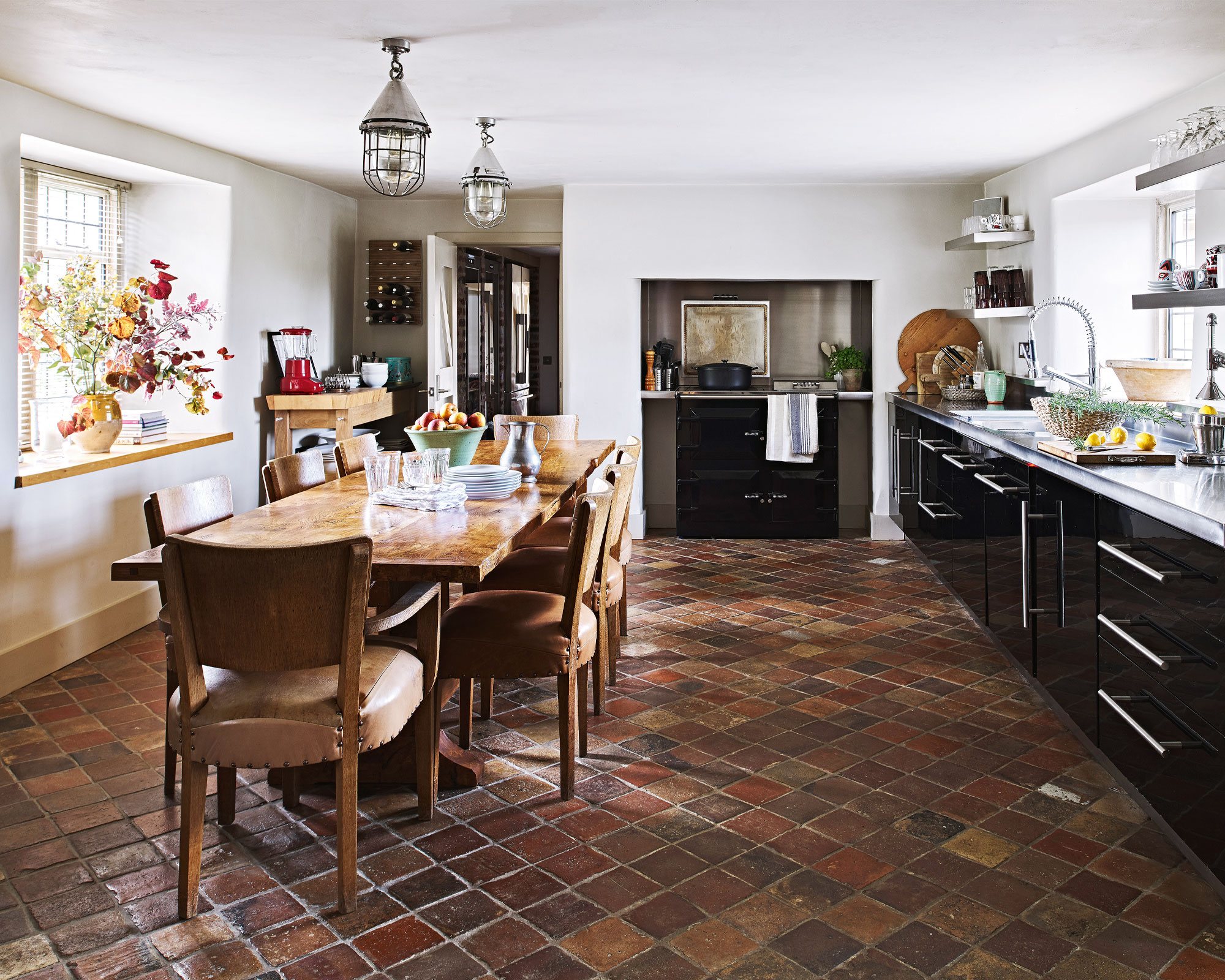

The kitchen floor is likely to be one of the largest surface areas in your home, so kitchen flooring ideas always deserve some careful thought and attention.
When planning your kitchen ideas, your kitchen flooring needs to perform on many levels – durability, safety and ease of cleaning – and of course, it must look great too, so give it as much consideration as your cabinetry.
Flooring ideas should always work together with the rest of the room, so a great place to start in the kitchen is taking the look and material of your units into consideration when picking flooring.
Kitchen flooring ideas
Materials such as durable laminate and matte porcelain will look great in modern kitchens, while natural stone tiles and warm wood suit traditional designs. A popular, contemporary flooring material is polished concrete, which gives a chic, industrial edge.
Budget carefully to include all fitting costs and extra expenses for underlays, fixatives and grouts. If you’re hoping to lay underfloor heating, do check it is compatible with your flooring before you buy.
There is a wealth of kitchen flooring ideas to choose from which makes knowing how to choose the best kitchen floor somewhat tricky, so let us help you narrow it down with expert advice, our top materials, styles, finishes and designs.
1. Choose dark flooring for a contemporary look
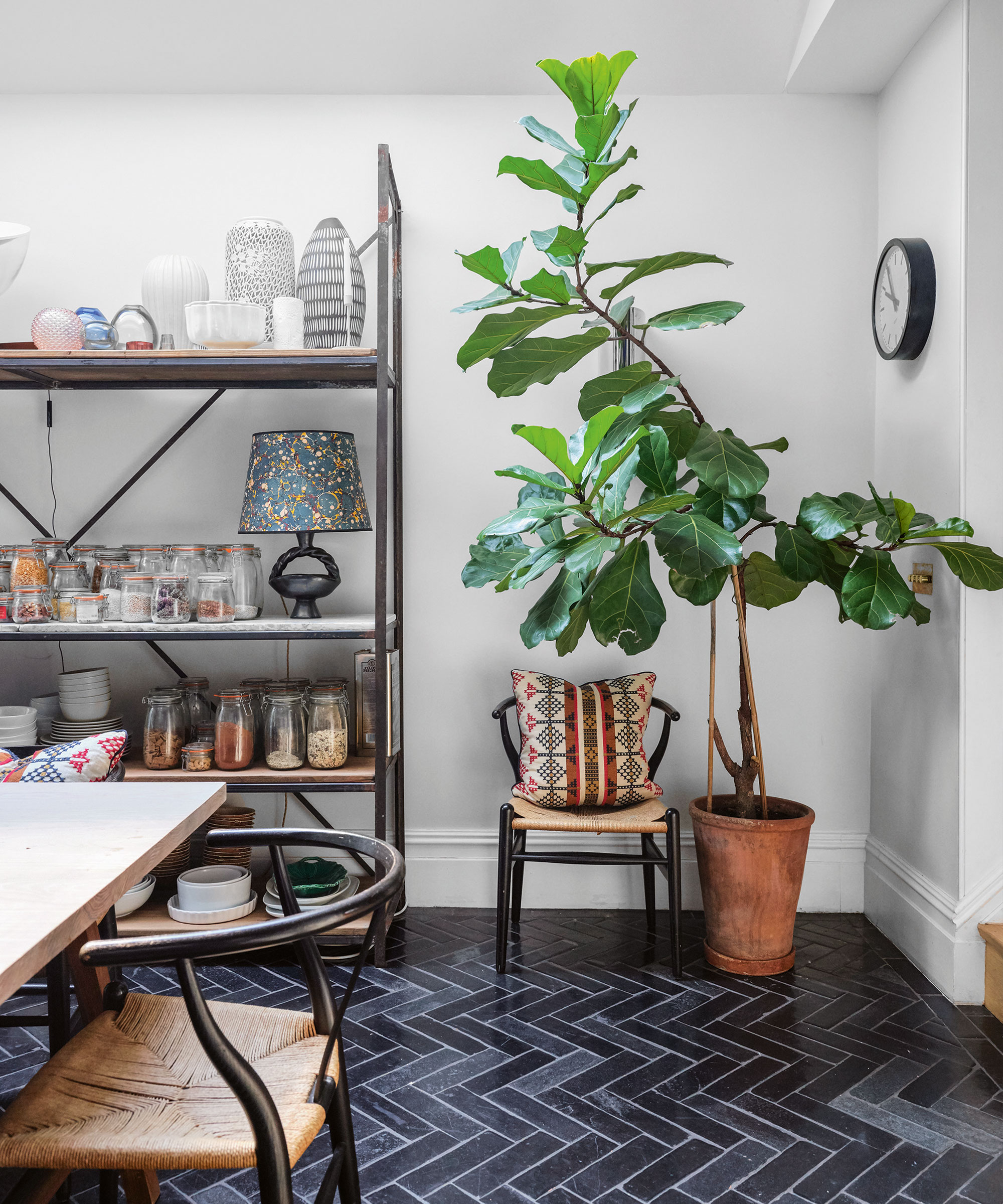
Dark flooring does not need to make a space feel enclosed or uninviting - it can actually achieve quite the opposite effect. When paired with the correct complementary shades, black flooring can make your kitchen space feel sophisticated and contemporary, and is great for coordinating with pretty much any other color out there.
In this modern kitchen, the soft black parquet tiles form an elegant, textured design, with the white paint used on the walls making the room feel light and bright. Further complemented with natural colors and textures, the overall space feels warm and inviting.
2. Opt for luxurious marble flooring
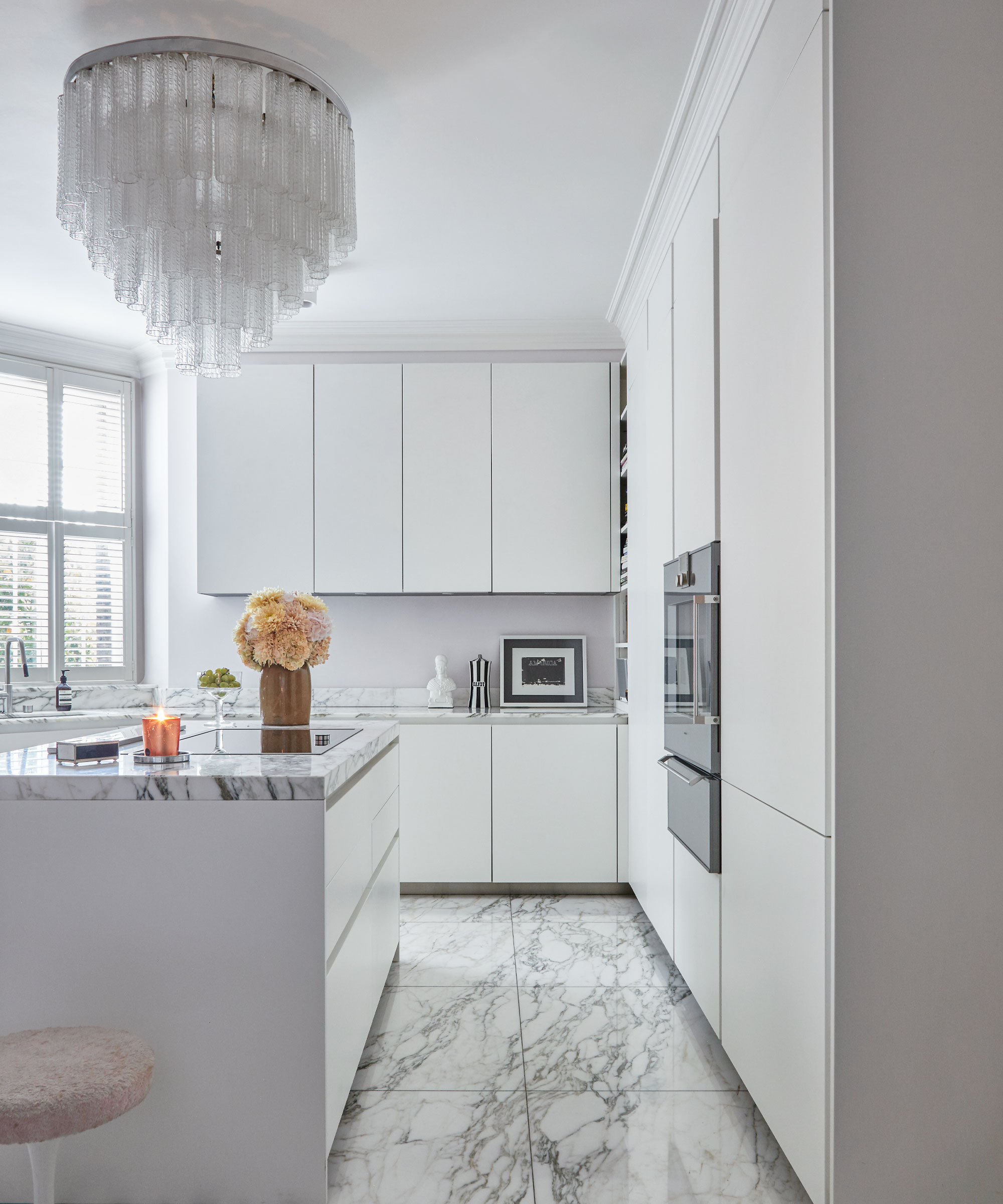
Timeless, durable and utterly beautifully, choosing marble flooring can turn your kitchen into a truly show-stopping space.
From large format-tiles to marble vinyl effects, there are a range of styles and options that can integrate into your kitchen. Whether you complement the marble used on your countertops, or choose a contrasting marble design for added impact, the enduring material can elegantly elevate your kitchen design.
Marble flooring can also be a great option for a smaller kitchen space, George Miller, Designer at Neptune states, ‘choosing flooring for a smaller space, shouldn’t feel limiting, in fact, with a smaller area to cover, you can afford to invest in quality materials that will make a statement and stand the test of time’.
3. Add a rug for inviting comfort
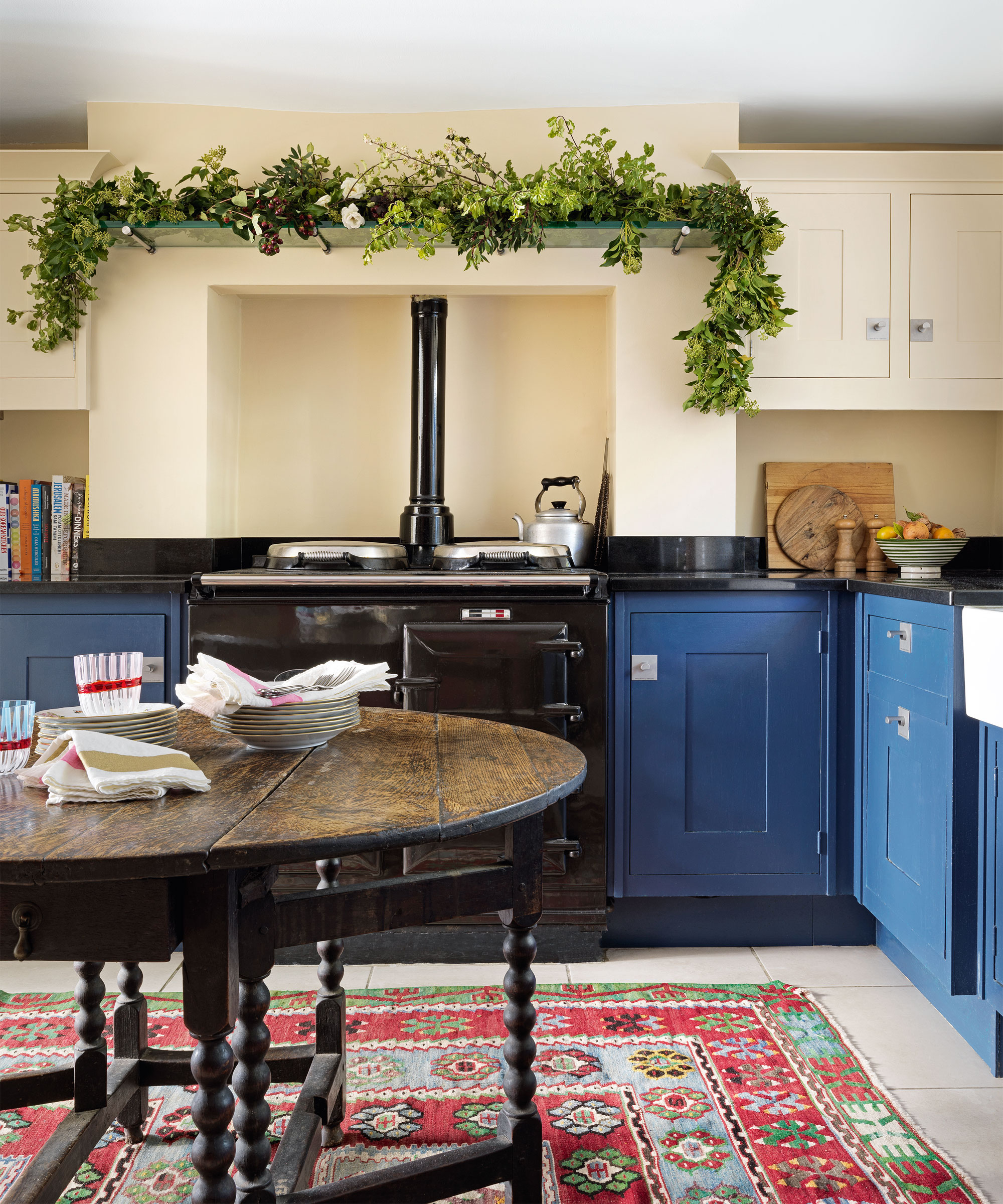
Rugs are not typically associated with a kitchen space, however, kitchen rug ideas can make your kitchen more inviting and cozy with added texture.
Perfect for large, open-plan kitchen designs, a rug can make the space feel more connected and unified, as well as adding warmth and softness to hard floors. Adding a rug to your kitchen space is also a simple way to add color and character to the room.
The rug in this kitchen complements the striking blue cabinets and sits perfectly beneath the dark wooden table, grounding the table to the space whilst effortlessly connecting it to the rest of the room.
4. Create a light and airy feel with white flooring
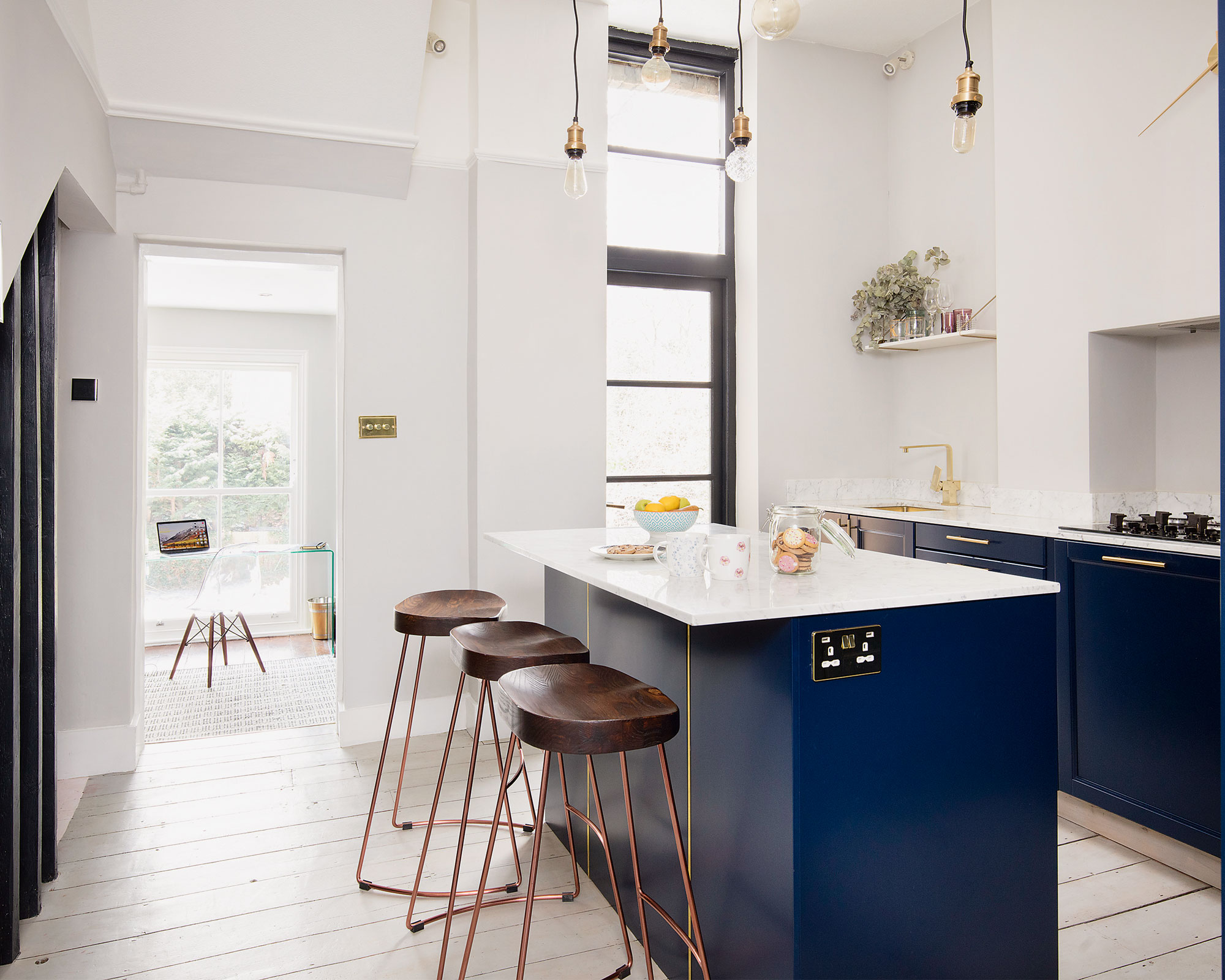
'Using white flooring in your kitchen is a great way to make the space feel bigger and brighter - ideal for kitchen spaces that are on the smaller side,' says Homes & Gardens' Editorial Director Sarah Spiteri.
Whether you choose white painted floorboards, or opt for white stone or vinyl, white flooring can create a beautifully relaxed, calming atmosphere - perfect for a busy, high-traffic area such as a kitchen.
The white floorboards in this kitchen beautifully complement the white painted walls, emphasizing the light and space in the room. The blue painted kitchen units create an elegant contrast, adding character and balance to the space.
5. Keep it traditional with terracotta

Using traditional terracotta tiles will always create a warming, textured scheme that beautifully echoes designs and materials of the past.
Working well in both period and modern homes, this ceramic tile design is a popular choice for kitchen tile ideas, often due to its durability and timeless appeal.
Great for creating a country, farmhouse kitchen style, terracotta tiles add a timeless, earthy texture to a space.
6. Invest in real wood kitchen flooring

If it's warmth and character you want, wood kitchen flooring is a great buy.
Jenna Kane, Product Development at Kersaint Cobb says:
'As a particular busy area of the home, the flooring you select for your kitchen needs to fulfil a number of requirements. Wood is a sturdy and attractive solution with the added benefit of wiping stains clean if you are making a particular messy recipe!
'Wood flooring can be a striking focal point in any kitchen design and the natural grain can add texture and interest to the space. You can opt to select timber flooring that matches wood featured on cabinetry or even smaller accessories and shelving.
Is wood flooring suitable for kitchens? 'You must always bear in mind that wood is a natural material and can be scratched and dented if too many items are dropped on it or damaged if too much liquid is spilt. Therefore look at your home and who will be using the kitchen to select the option which is right for you,' concludes Jenna Kane.
7. Choose a herringbone wood kitchen flooring for an elegant look
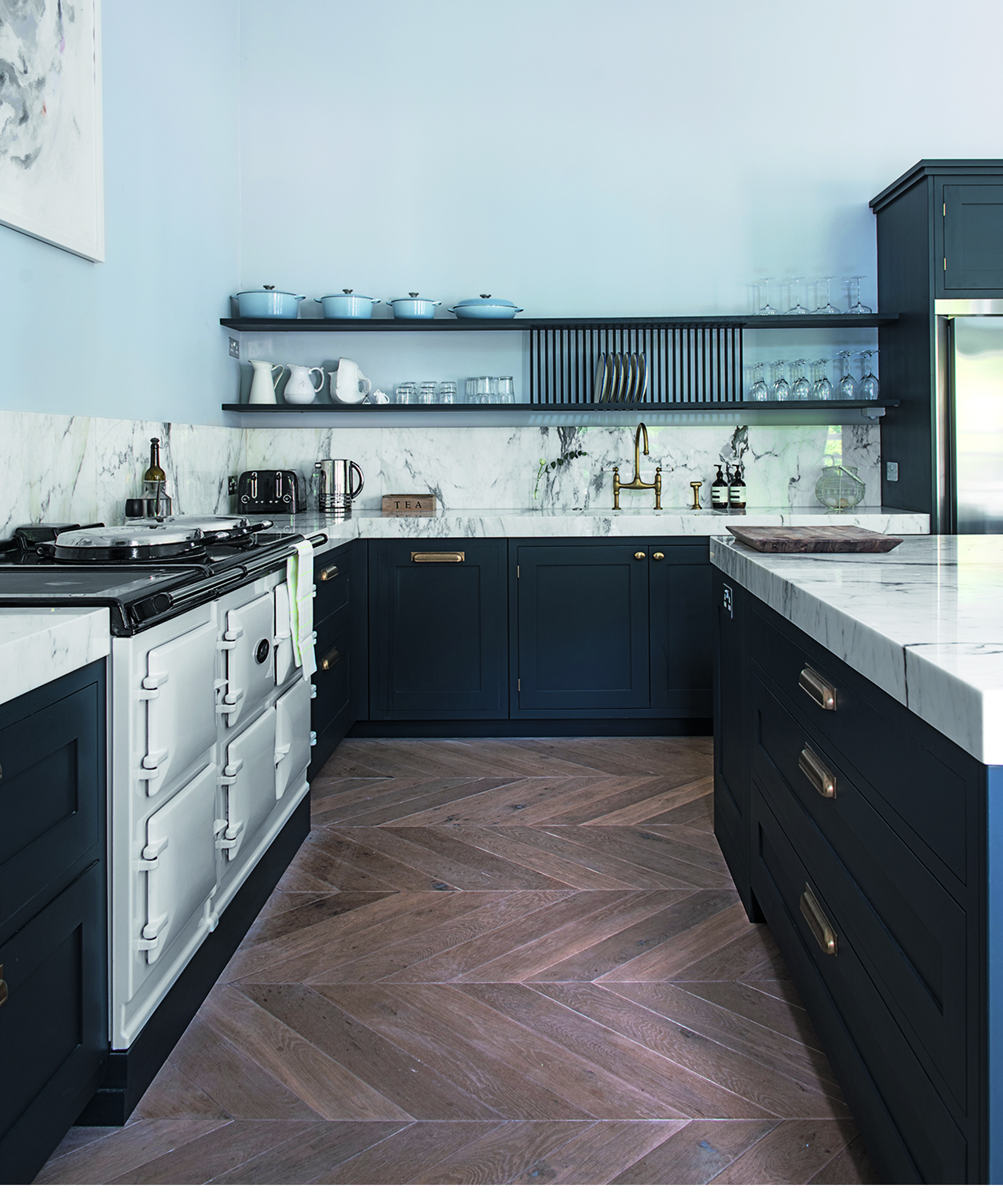
With so much choice available in terms of both material and pattern, it can be daunting to find the right kitchen flooring ideas when planning a kitchen.
Herringbone styles are currently very popular, either in ceramic or wood, and they’re an ideal way of introducing subtle yet beautiful pattern and a welcome sense of texture into even the simplest kitchen flooring, instantly making it a focal point.
There has been an increase in the popularity of patterned wood floors. Larger herringbone pieces often look more contemporary. If it’s for an open plan kitchen, a distressed chevron or herringbone floor will stand up well to general wear and tear.
Choose a delicate parquet if you want to give a nod to a feature floor without being too over the top. Classic parquet flooring can be laid as individual blocks, or the effect can be copied by engineered wood planks, which are easier to fit.
'We would always recommend you seek professional guidance to ensure the flooring is fitted and maintained correctly as moisture can be an issue in this environment, especially with parquet as this is a very skilled install and not DIY,' continues Jenna Kane.
8. Pick real wood for warmth
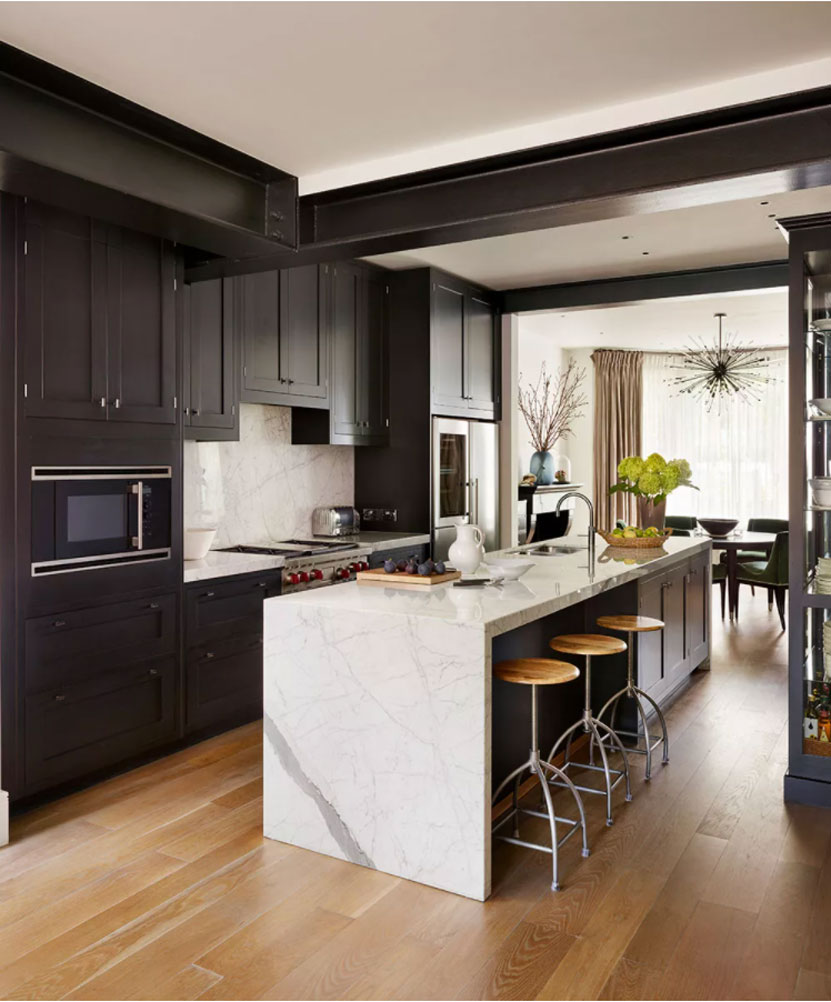
Warm and welcoming underfoot, solid wood kitchen flooring will need careful treating and maintenance to make sure it doesn’t warp, as it is less resistant to water damage than engineered wood (a thin layer of wood veneer).
However, if your scheme is open plan, you could run the same floor throughout the space to give a visual link in different zones – dining, cooking and lounging, for instance.
‘Engineered timber is better in kitchens than solid wood, as the layered construction of the boards creates a very strong and stable surface. This is particularly important if you are installing underfloor heating or a cast iron cooker,' says Peter Keane, director of The Natural Wood Floor Company.
9. Combine kitchen flooring materials to complement cabinetry
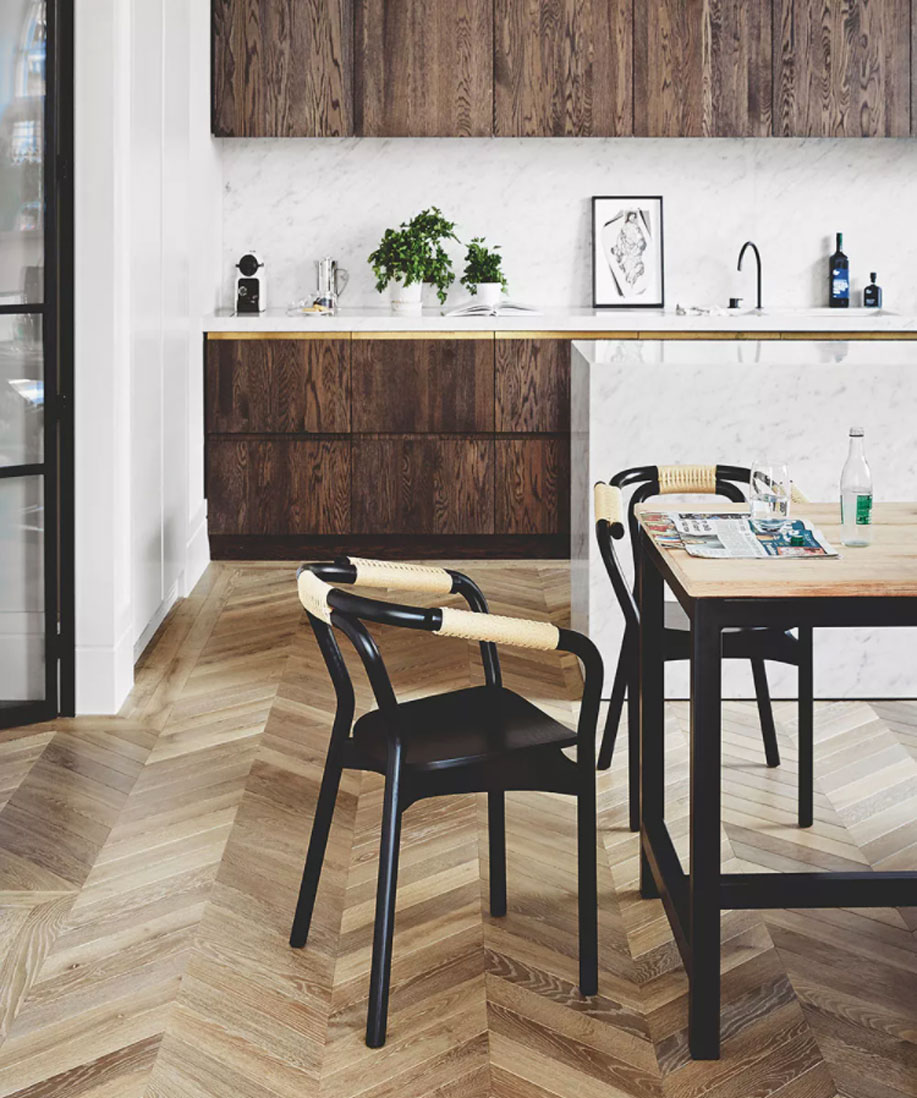
'Anyone who has ever designed a kitchen will know that it's vital to choose kitchen cabinetry at the same time as kitchen flooring ideas,' says Homes & Gardens' Editor in Chief Lucy Searle.
'It makes sense that kitchen cabinets come first, but choosing the flooring should be the next big decision – ideally taken hand-in-hand with picking out countertops. My best advice, if you don't have an experienced interior decorator choosing for you, is to bring a sample of the cabinetry you have chosen into the kitchen, along with samples of flooring and countertops.
'Hold the cabinetry sample vertically so that the light hits it at exactly the angle it would when installed, then sit the kitchen flooring and countertop samples against it, but horizontally so that, again, the light hits it at the right angle. Observe the different tones it takes on in daylight and under artificial light – only then can you really ensure you have chosen well.'
10. Lay wood-look laminate or vinyl for a practical kitchen flooring option
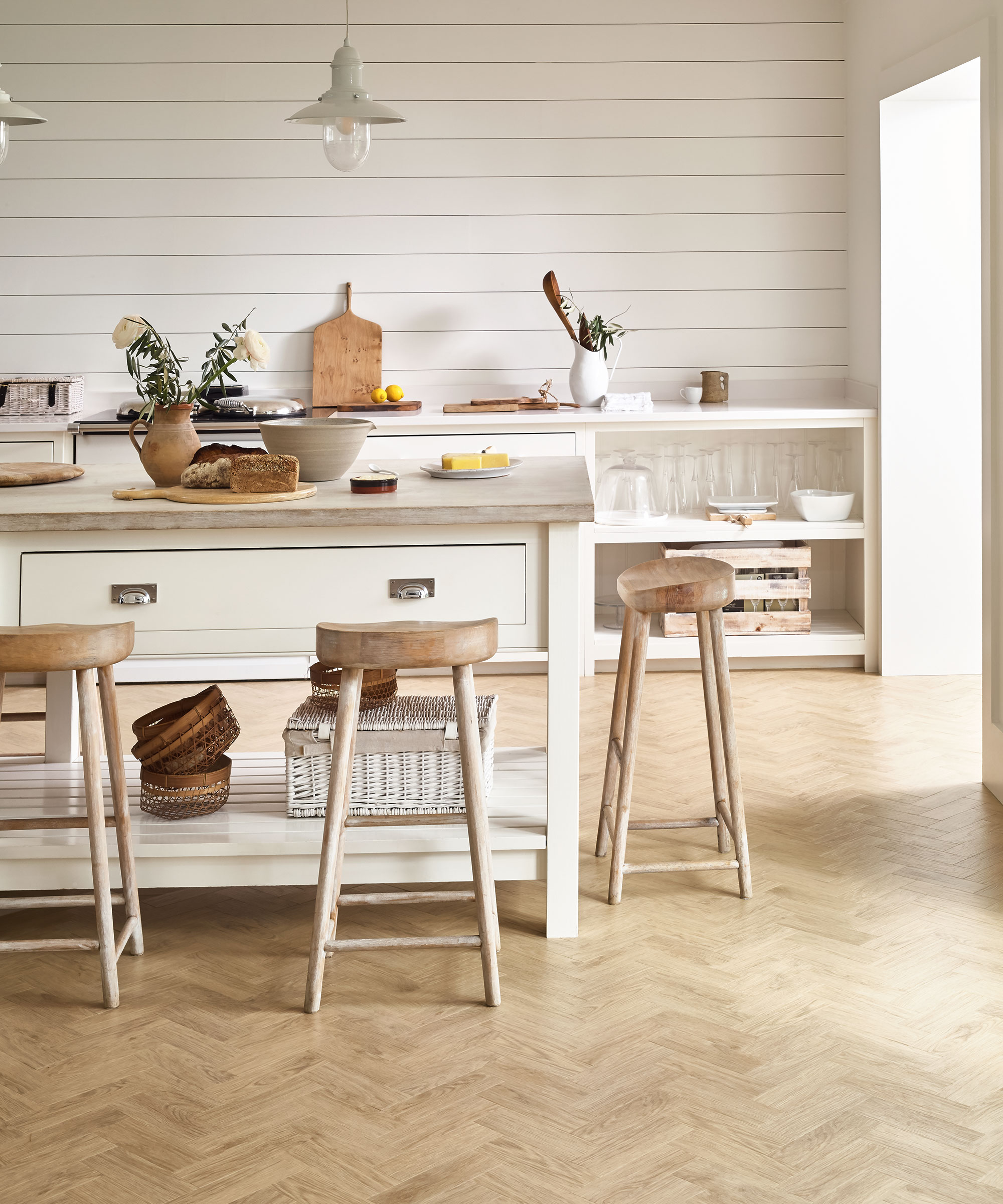
If you are remodelling a kitchen in a rental property, or need a temporary solution, both luxury vinyl kitchen flooring ideas and laminate (wood particleboard with sealed and protected printed paper over the top), which is laid in planks that fit together for easy installation, are good-looking alternatives to real wood and stone.
Make sure you choose a laminate that is suitable for kitchen flooring use, as some are not suitable in damp environments.
11. Go for a practical wood-effect porcelain tile
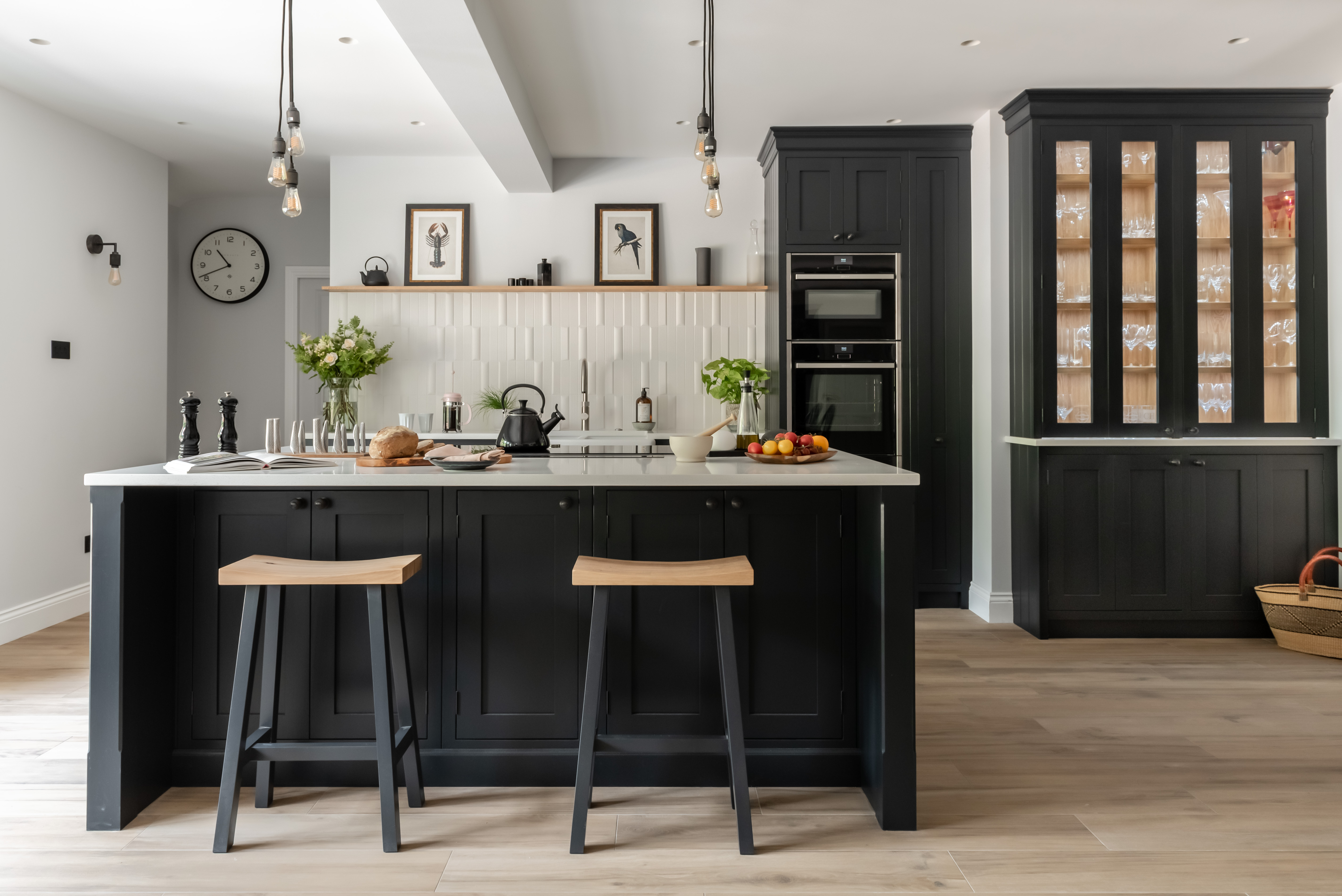
'Timber-effect plank-shaped porcelain tiles are also popular, not least because they introduce a sense of character and movement,' says Jules Archard, showrooms manager of Domus.
'Previously, their totally flat printed surface used to give away the fact that the planks were not made of real wood, but now a woodgrain is pressed into the surface of the tile before it is printed, so their texture is realistic too.'
12. Source reclaimed wood for a rustic, country look
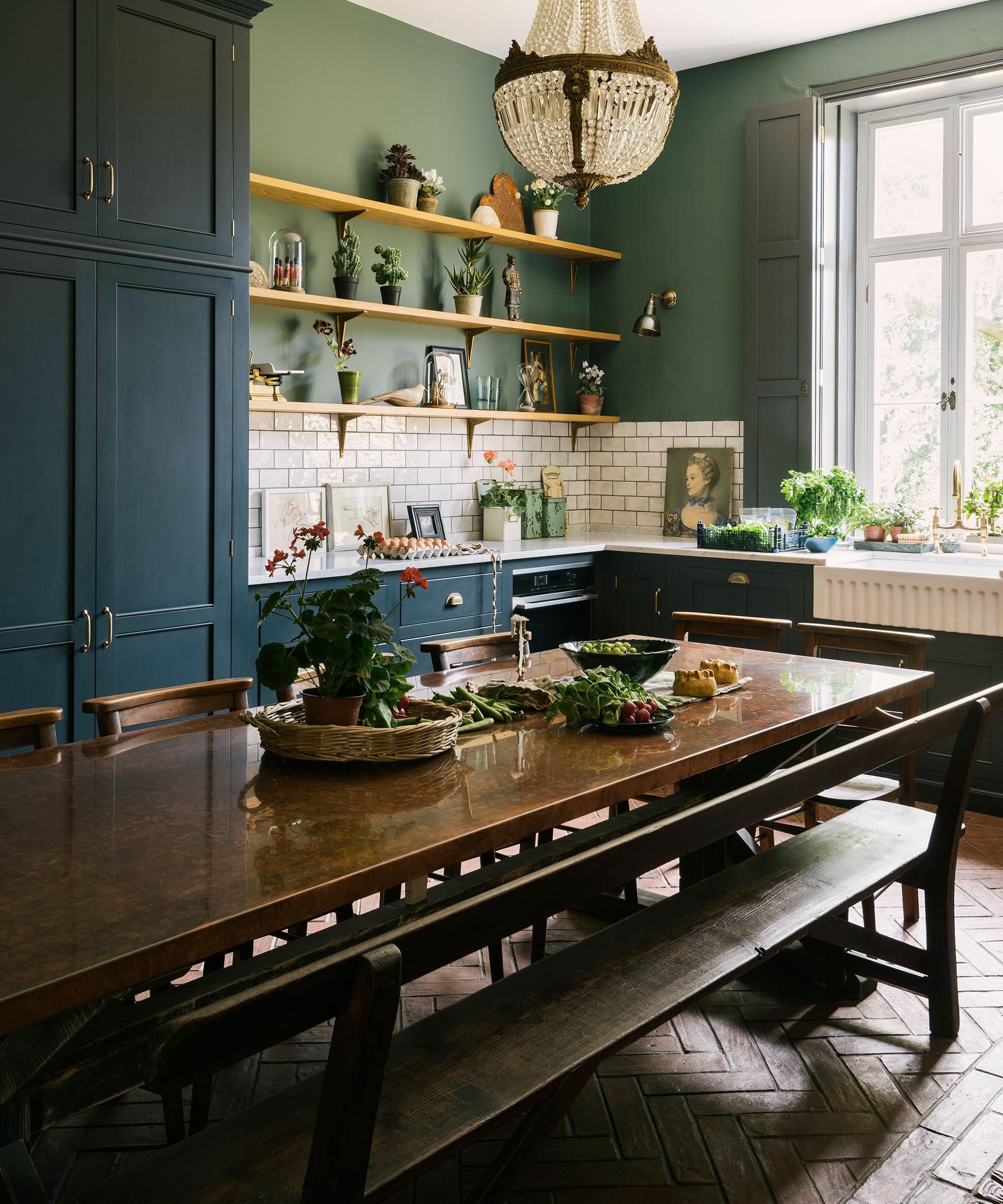
Reclaimed wood floors are not only full of charm, character and history, but buying anything salvaged is environmentally responsible and spot-on for today's recycling trend.
Whether it's oak beams recovered from old American barns or Burmese teak parquet reclaimed from a remodelled school, salvaged boards bear the unique marks of time, much like a slice of history at home.
'You can't get more green than buying reclaimed timber flooring,' says Nick Newman of celebrated British salvage specialists Lassco.
'It is environmentally responsible and will have been sourced relatively locally, had the nails removed by hand by us, then sorted and stacked. Reuse reduces landfill while curbing the need to plunder the earth's resources. Salvage generally has not travelled very far, so it bears a comparatively tiny carbon footprint.'
13. Be on trend with a large format kitchen floor tile
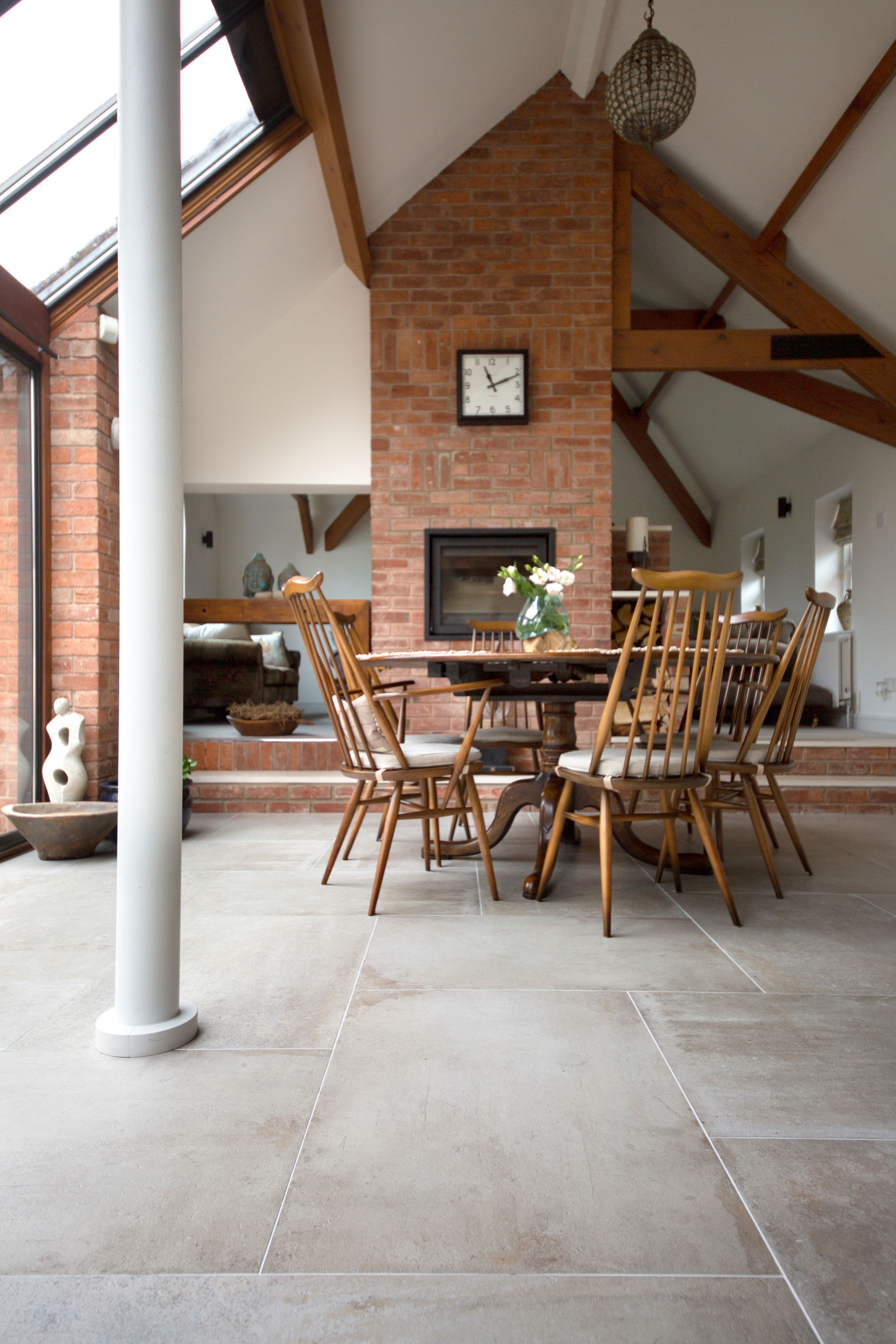
If you're looking for kitchen floor tile ideas, you might wonder what's on trend.
'At the moment, we find customers are leaning towards larger tile sizes as often minimizing the number of grout joints is a priority,' comments Joshua Fernandez at Quorn Stone.
'In terms of kitchen trends, we always advise customers to steer clear and go for a classic style in the kitchen area. Purchasing a stone flooring or porcelain floor is an investment for the home and one that often takes careful consideration – our advice is to always go neutral in your chosen floor covering for ground floor spaces and instead inject colour through paint colors and accessories. A lick of paint is far easier to change in years to come than a different floor.'
14. Install a matte finish stone for a relaxed look
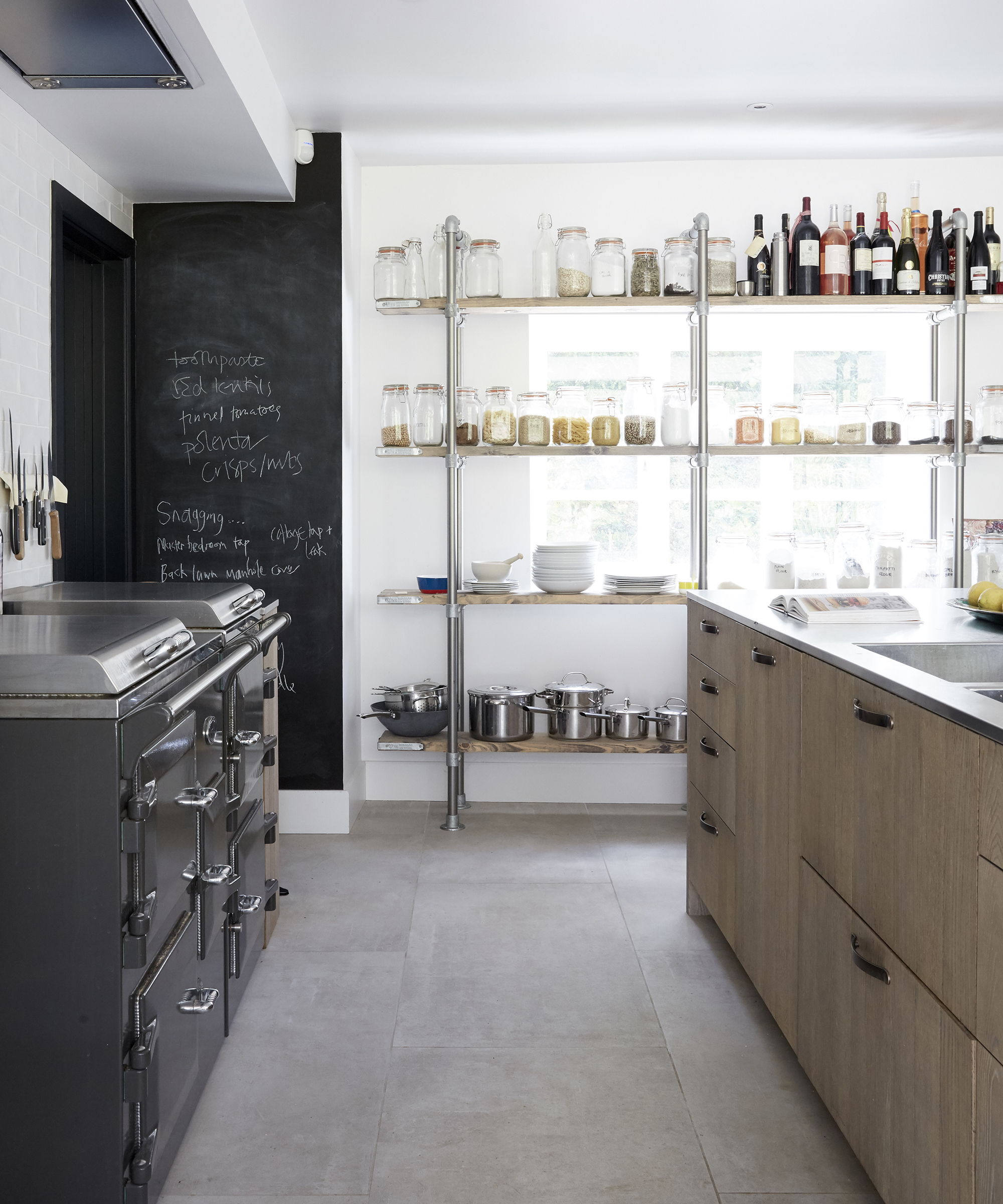
'We are seeing a move towards kitchen flooring ideas that create a very relaxed feel with a reassuring warmth, and soft, matte limestone-effect porcelain tiles fit the bill well,' says Jules Archard of Domus.
'This finish is also easier to keep clean than polished or very textured tiles. Consider large format tiles, such as 1.2 x 2.4m, if you want to create a sense of scale and drama, even with a neutral tile.'
15. Choose natural materials for an elegant look
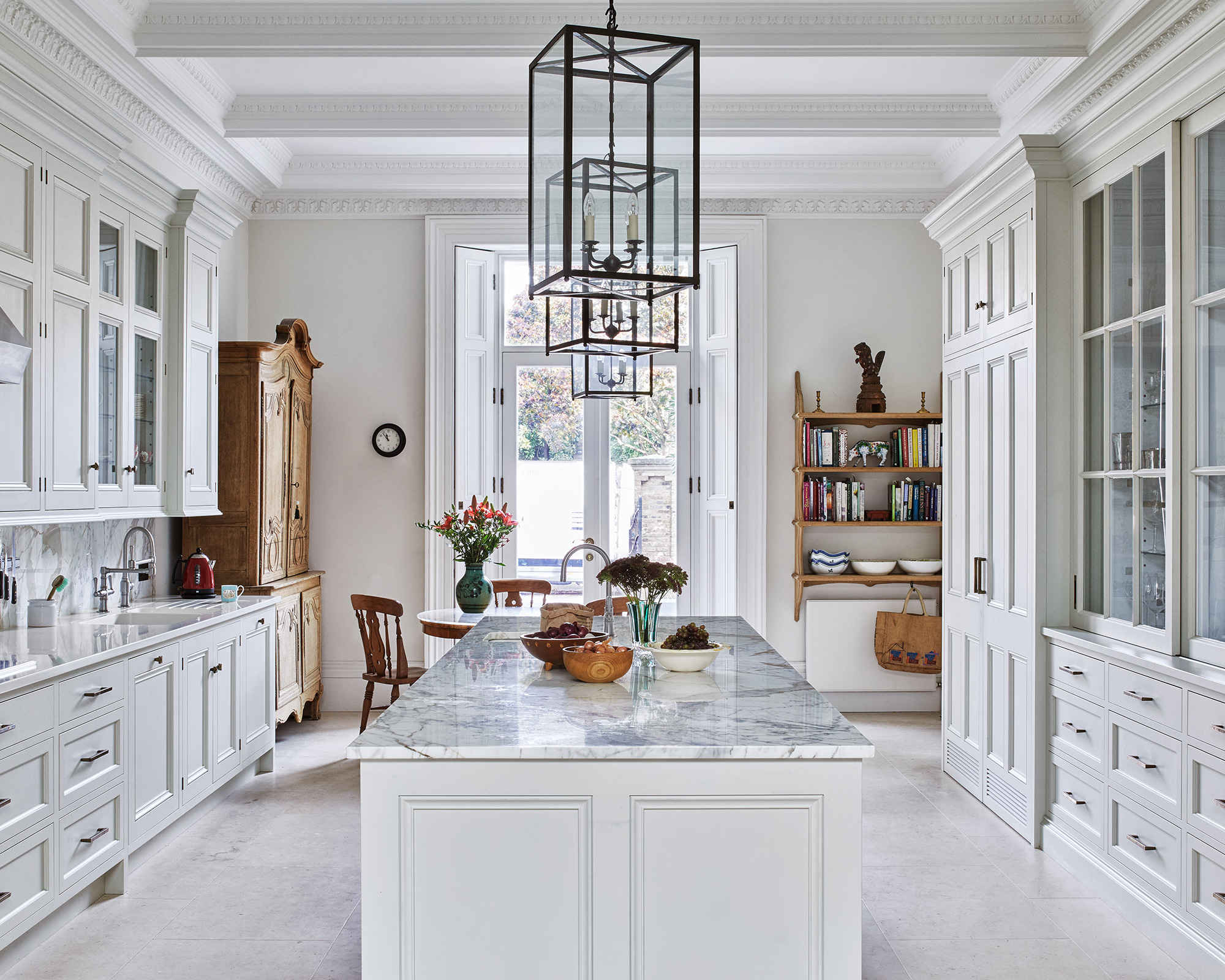
Natural stones like marble and limestone can create a timeless look, like in the elegant white kitchen above.
However, Jules Archard adds: 'If you prefer to use a real stone, such as limestone, for its natural beauty, you do need to embrace the fact it is porous and may stain and weather over time, requiring regular maintenance to keep it looking its best.'
16. Pick terrazzo for contemporary kitchen flooring ideas
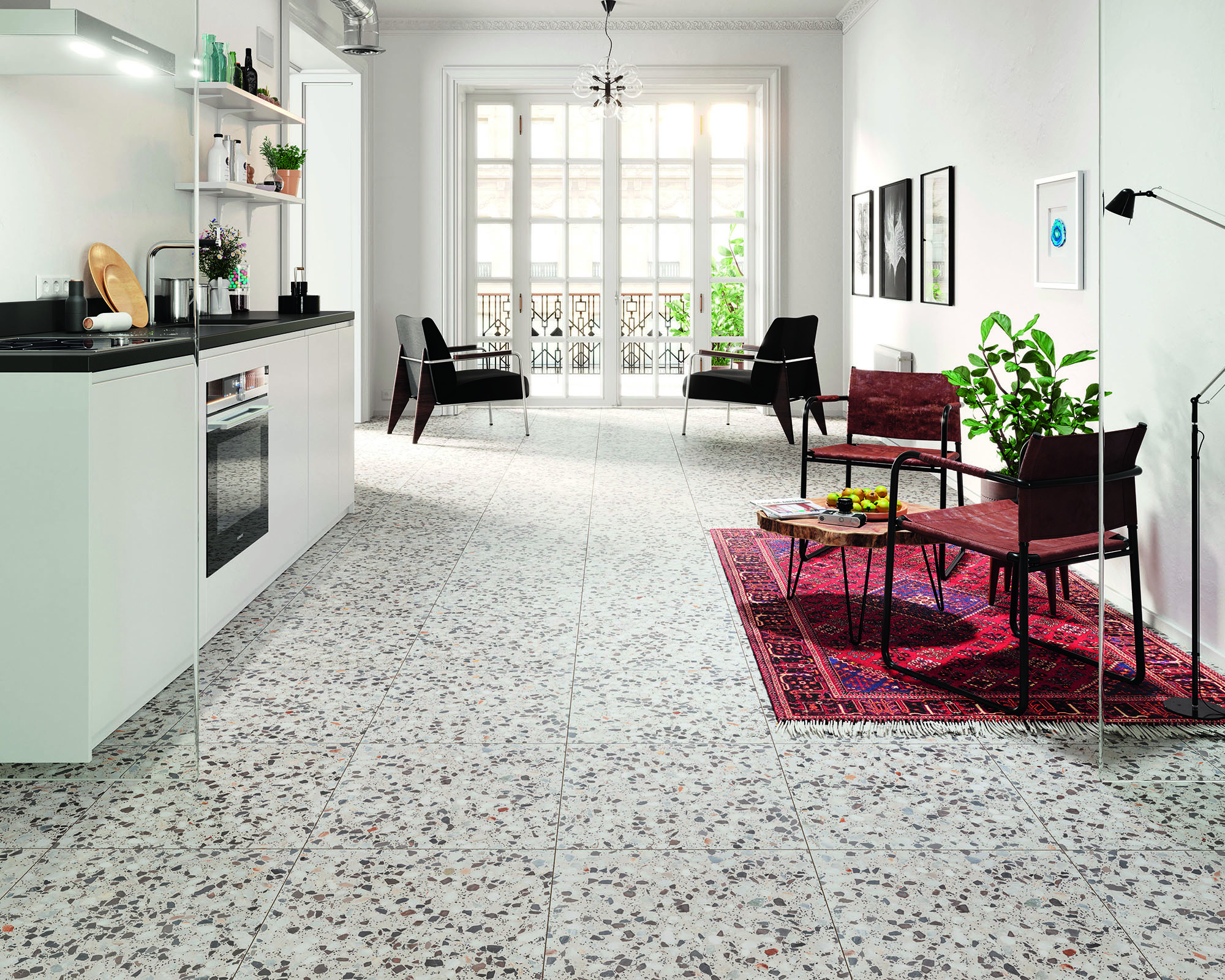
'Porcelain tiles are by far and away the most popular material these days, because they are robust, non-porous, highly stain and scratch resistant and work well with underfloor heating, and because they come in such a huge variety of designs, colors and formats,' says Jules Archand.
'Stone-, wood-, concrete- and terrazzo-effect porcelain tiles score highly; it’s crazy how faithful some of the reproductions are.'
Layering in kitchen rug ideas is a great way to add warmth and softness underfoot, helps with acoustics and brings extra texture and pattern to a space.
17. Make a dramatic statement with patterned floor tiles

If you want the soft powdery colors and pattern of encaustic (concrete) tiles without the maintenance requirements, consider an encaustic-look porcelain, such as Puzzle from Domus (above).
Or create a bespoke floor by combining shapes: it is amazing how many different kitchen floor tile ideas and designs you can create with a triangular format in a range of colors.
18. Find the right stone kitchen flooring
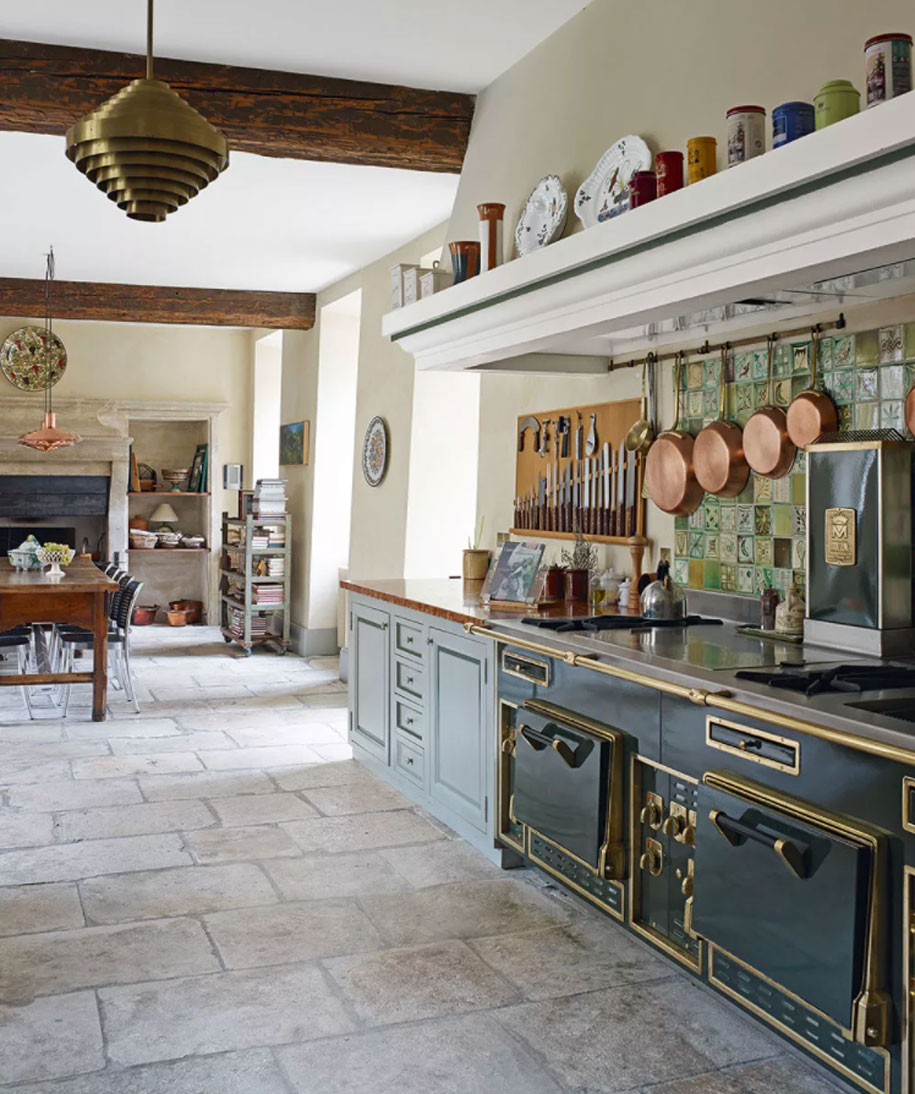
Stone kitchen flooring choices include natural stone, man-made ceramic, terracotta and porcelain. All are hardwearing and easy to clean, with porcelain being the most hardwearing of all due to its non-porous, scratch resistant properties.
For kitchen flooring ideas with individual character and natural beauty, look no further than natural stone: no two tiles will ever be identical, so your kitchen flooring will be unique.
Stone offers a classic and luxurious look and tends to improve as it acquires the ‘patina’ of age. Smooth marbles and honed limestones are a sophisticated and smart choice, or choose a weathered flagstone that sits comfortably in a country kitchen.
Make sure your tiles are treated before laying to avoid staining.
19. Add a pop of color with kitchen flooring ideas
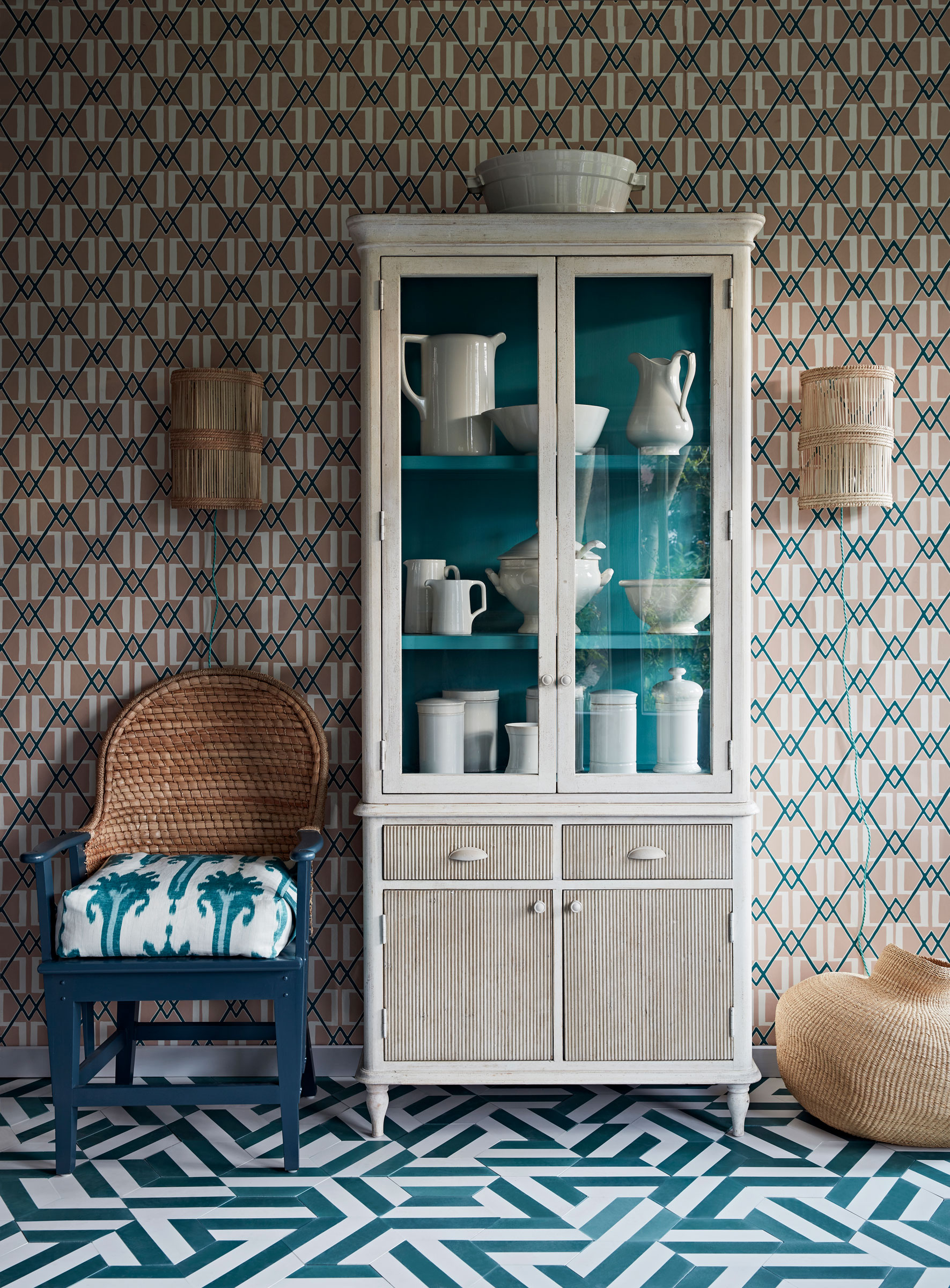
We’re so accustomed to standard tiles that it is often easy to forget that the variety in size and manufacturing processes gives rise to a huge number of design possibilities. Kitchen flooring ideas are a beautiful way to experiment with bold, distinctive pattern choices, especially if you choose to keep the rest of your kitchen color scheme neutral.
'We’ve found that tiles of this nature were commonly used in smaller spaces, such as shower enclosures, cloakrooms and kitchen backsplashes, but as we’ve grown to know and love playful patterns, we’re branching out to using them in large kitchens and open plan spaces,' says Katy Harris of Verona.
20. Pick concrete kitchen flooring ideas for an industrial flavor
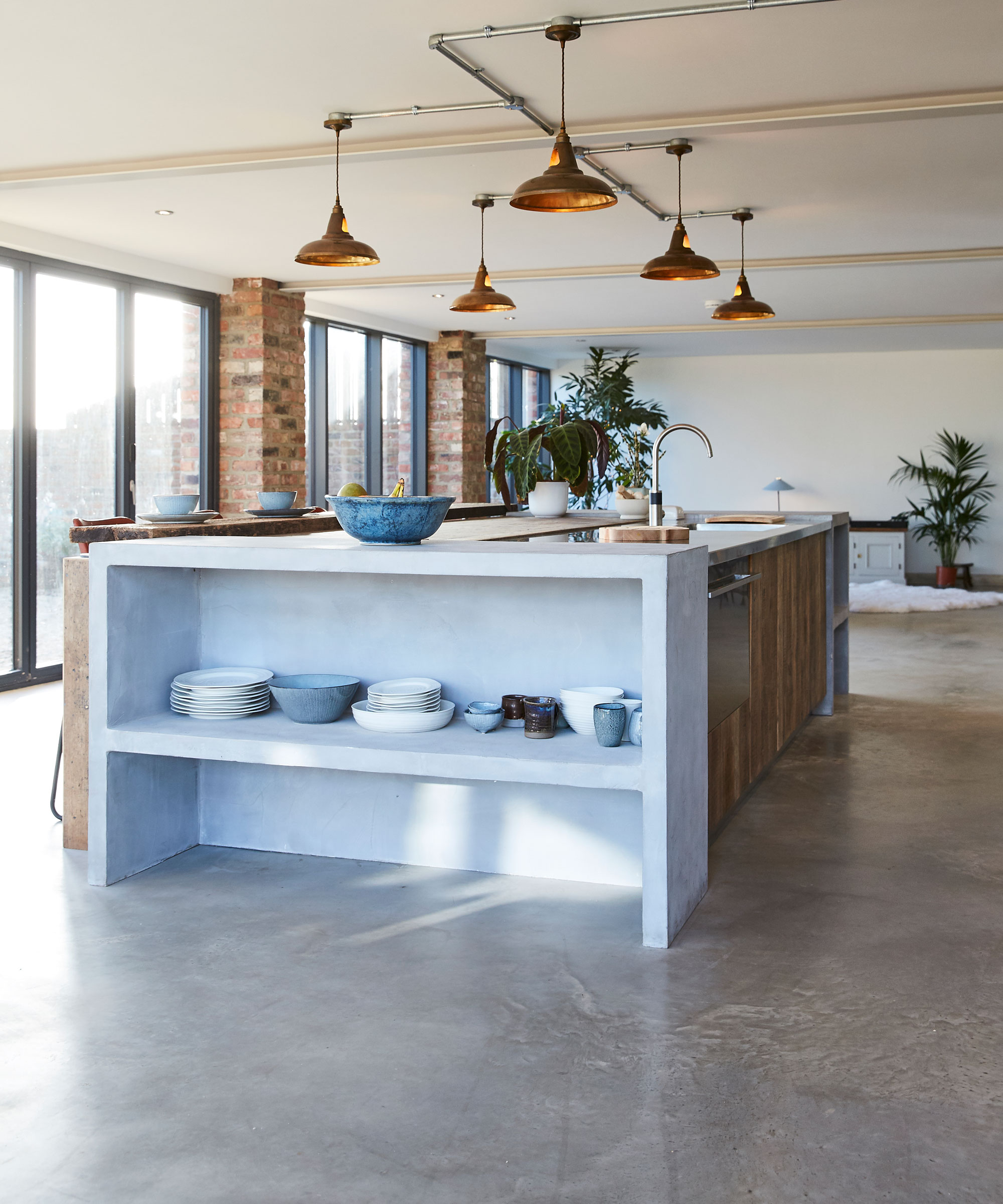
Far from being ordinary construction materials, the raw unfinished beauty of plaster and concrete find a very stylish home in kitchen flooring ideas. In their exposed, uncovered state, both plaster and concrete have a bold, utilitarian quality, and an almost brutal sophistication.
Concrete, in particular, is a hardwearing and versatile material that can be cast into shapes and slabs, or poured, smoothed and polished, making it suitable for floors, countertops and even part of the kitchen itself if it’s an industrial look you are after.
While polished concrete requires specialist installation, it can last a lifetime and requires minimal maintenance. It is wise to install a heating system as your concrete flooring goes in, otherwise it can feel quite cold underfoot – and retrofitting can be a costly and disruptive task. You may also want to add a large cozy rug to soften up the space and help absorb sound and prevent unwanted echoing throughout your property.
21. Be bold with pattern for a lively, fun space
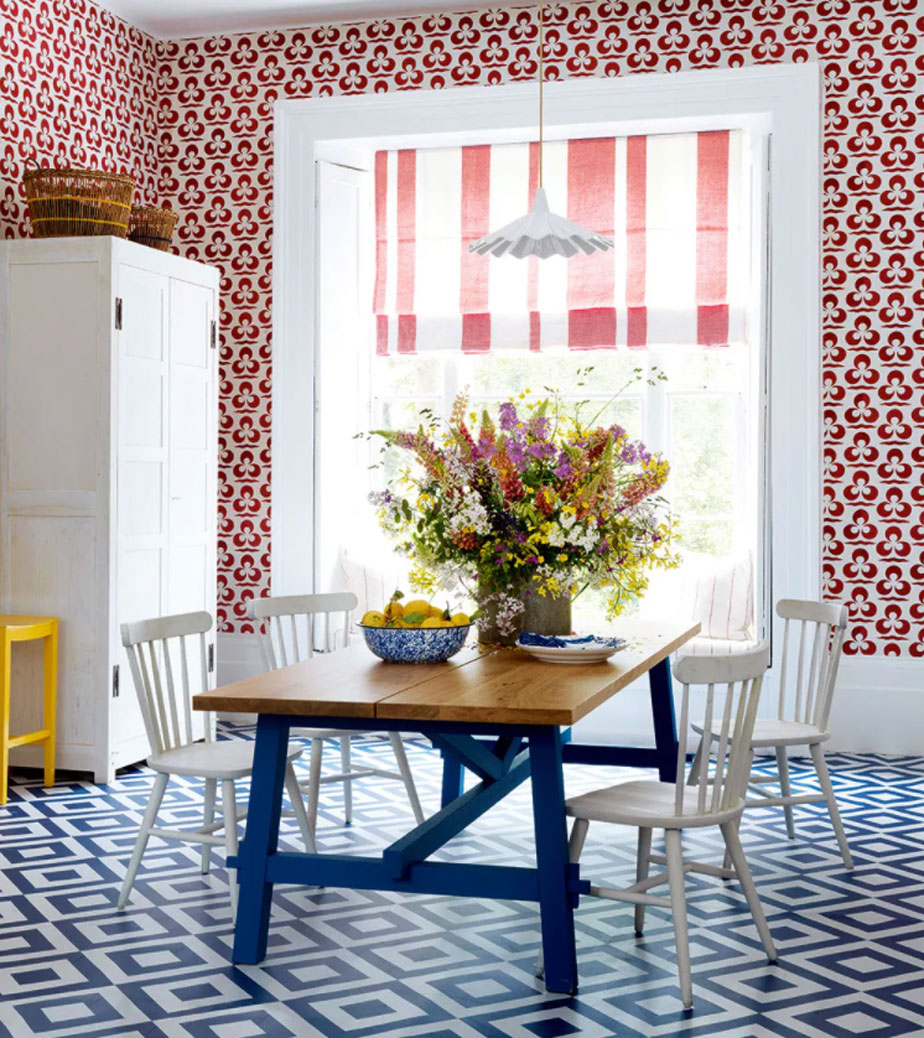
Love a dramatic scheme? Bold geometrics and exotic Moroccan designs are particularly contemporary and versatile kitchen flooring ideas, as they have a timeless appeal that means that they’re equally at home in both modern and traditional kitchens.
22. Choose a cottage-look tile
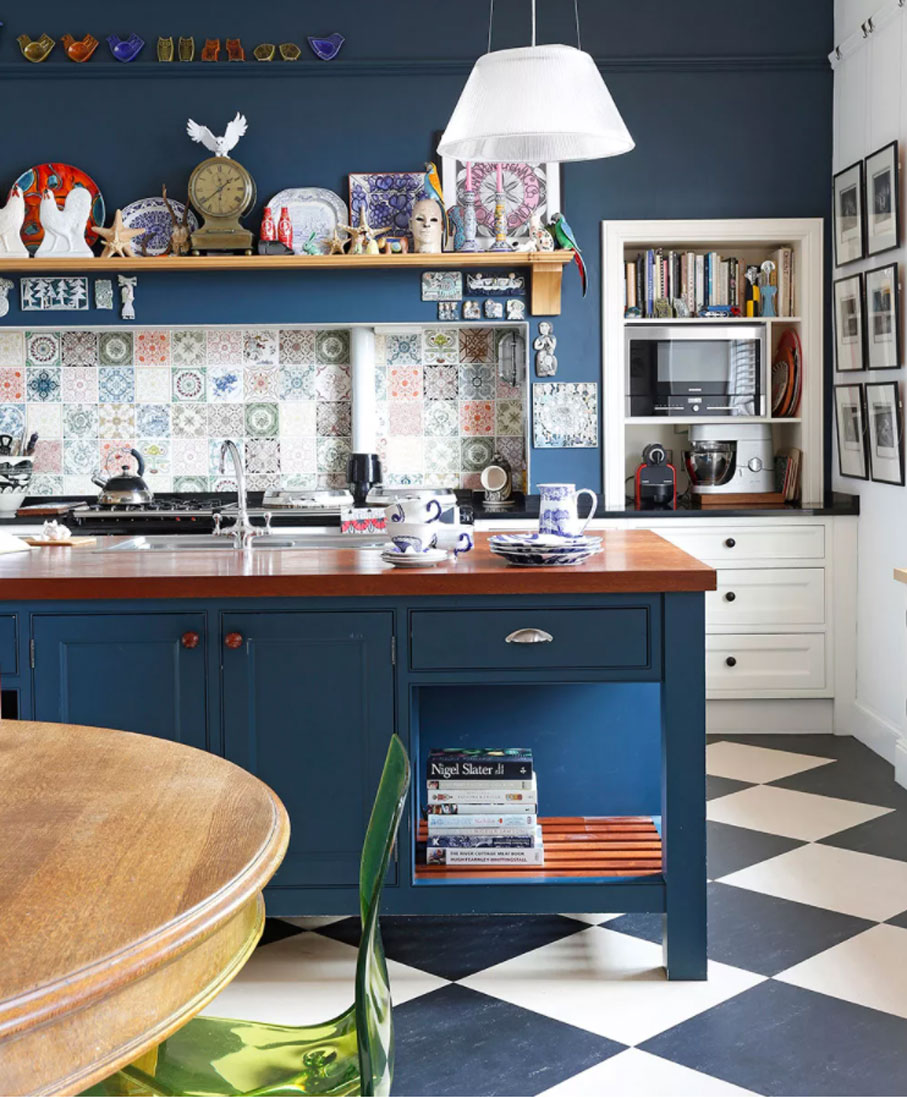
In small kitchens, 'keep it simple and don’t use too many different tile formats, colors and finishes,' advises Dorothee Junkin of Dorothee Junkin Design Studio.
'Less is more when it comes to bold kitchen flooring, so use pattern selectively. It loses its effect when there is too much of it or when there are other patterns competing for attention.
'Try a classic diagonal checkerboard or a very defined and crisp geometric, so that the eye can catch the defining principle of the pattern with just one glance.'
What is the best flooring for a kitchen?
Natural stone is arguably the best kitchen flooring. It should last forever and acquire a lovely patina over time, but it can be cold and unwelcoming underfoot, so ensure you couple it with underfloor heating and rugs.
Wood planks are a timeless classic but can be expensive and need regular after-care, while tiled floors can be cold and unforgiving underfoot (underfloor heating will help).
If you have an open plan kitchen living room, you may want to use contrasting floor materials to define zones, or else use the same floor throughout for a fluid, seamless space (a good option for small kitchen layouts).
What is the most durable kitchen flooring?
Again, natural stone is the most durable kitchen flooring, closely followed by porcelain tile – if you are trying to balance kitchen flooring costs, the latter will give you good durability at a lower price.
All kitchen flooring ideas need to be tough, long-lasting and hardwearing, so consider comfort, durability and maintenance issues as well as pattern, finish and looks.
It is always better to get your floor laid by a professional, whichever type of material you choose; they can advise on substrate, quantities and any special finishes or treatments that will extend the life of your kitchen flooring.
Limestone, slate, granite, sandstone and travertine (a limestone/marble mix) come in many sizes, formats and finishes depending on the color and finish you want. Not all stones are equally durable though, so ensure your choice is sealed against splashes and stains.
What is the easiest kitchen flooring to keep clean?
Single sheet kitchen flooring ideas are easiest to keep clean – poured rubber, concrete and vinyl sheet are all really resilient to dirt, scratches, chips or stains. However, all can be damaged if not swept regularly, as constant treading in of small stones or grit can eventually mark the surface. A quick mop with a general cleaning solution will finish the task.
Polished concrete will need resealing every three to nine months, but other than that you can treat it like any other durable floor and sweep and mop it to keep it clean.
Stone floors are tough, won't harbour dust and are easy to maintain with a quick vacuum and mop with a mild detergent, although pitted tiles and grout lines will attract dirt.
Laminate is durable, but needs a good vacuuming (with a hard floor attachment) before being cleaned. Use a general floor cleaner diluted in warm water, but as you would with wood, make sure no pools of water sit on the floor as you clean – a damp wipe with the mop is perfect.
Sign up to the Homes & Gardens newsletter
Design expertise in your inbox – from inspiring decorating ideas and beautiful celebrity homes to practical gardening advice and shopping round-ups.

Jennifer is the Digital Editor at Homes & Gardens. Having worked in the interiors industry for several years in both the US and UK, spanning many publications, she now hones her digital prowess on the 'best interiors website' in the world. Multi-skilled, Jennifer has worked in PR and marketing and occasionally dabbles in the social media, commercial, and the e-commerce space. Over the years, she has written about every area of the home, from compiling houses designed by some of the best interior designers in the world to sourcing celebrity homes, reviewing appliances, and even writing a few news stories or two.
-
 Victoria Beckham has a unique formula for perfect bedding: 'Very expensive sheets and cheap pillows' – you can follow her example from $15
Victoria Beckham has a unique formula for perfect bedding: 'Very expensive sheets and cheap pillows' – you can follow her example from $15Victoria revealed she goes for crisp, white bed sheets and pillows with neck support from Target – and you can shop similar buys at an ultra-low cost
By Hannah Ziegler Published
-
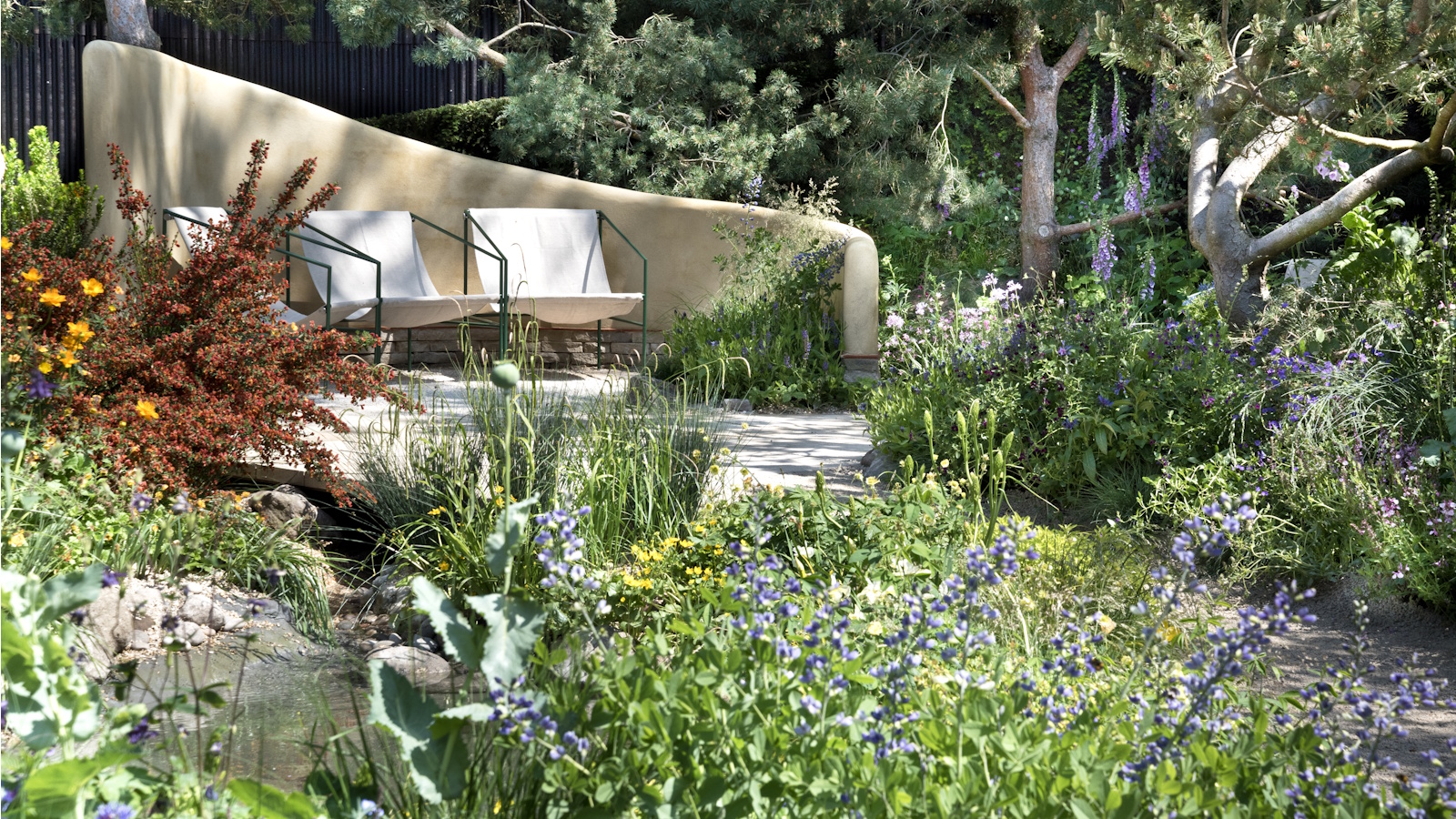 I just discovered the best non-toxic product for getting rid of ants in your yard – and you probably already have it in your bathroom cupboard
I just discovered the best non-toxic product for getting rid of ants in your yard – and you probably already have it in your bathroom cupboardThis household item is an effective ant deterrent that doesn't leach harmful chemicals into your soil
By Tenielle Jordison Published